Jackson's former WJDX building being restored to art-deco glory. Here is the history
Walls came crumbling down recently at the site of a historic, nearly century-old building in Jackson, originally designed by prominent Mississippi architect N.W. Overstreet.
But don’t expect tears or protests from historic preservationists. The demolition involved not the historic building itself but rather an undistinguished cinder-block addition in front of the building, which for years obscured the view of the original art deco-themed structure on North State Street near Beasley Road.
The original two-story brick and concrete building, completed in 1929, served as the transmitter site for radio station WJDX. It was designed, according to legend, to resemble a huge console-type Philco radio of the era.
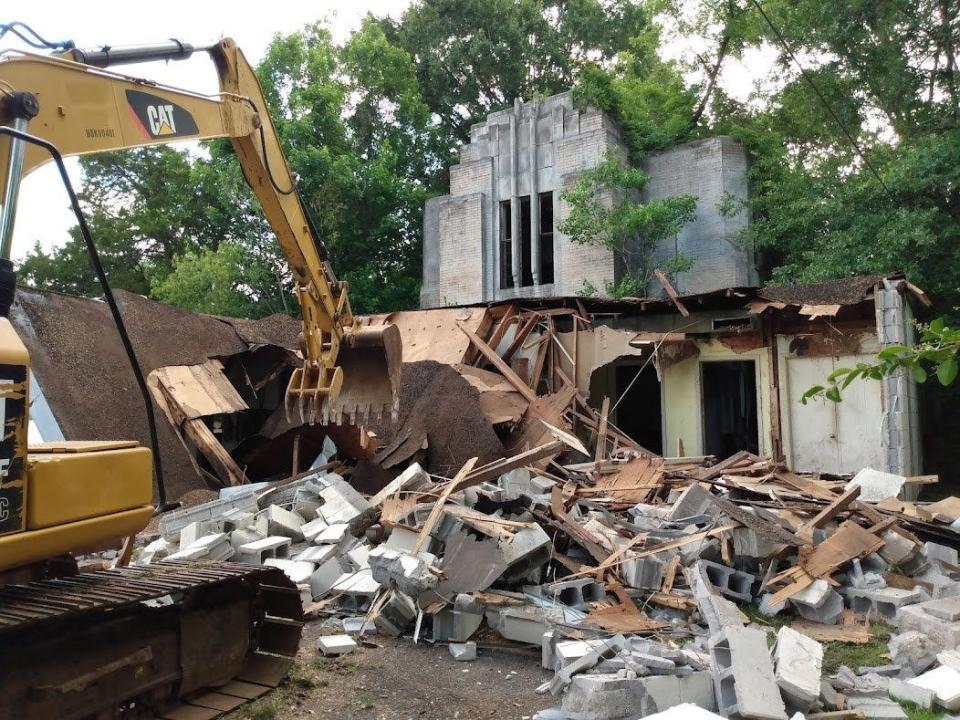
According to new owner Scott Allen of A Plus Signs and Creative, Inc., the goal now is to restore the original building to its former grandeur.
“It’s a great feeling that has exceeded my expectations,” Allen said of the demolition process that brings back the original structure as intended. “The building now feels more quaint and smaller — and so much better aesthetically to look at.”
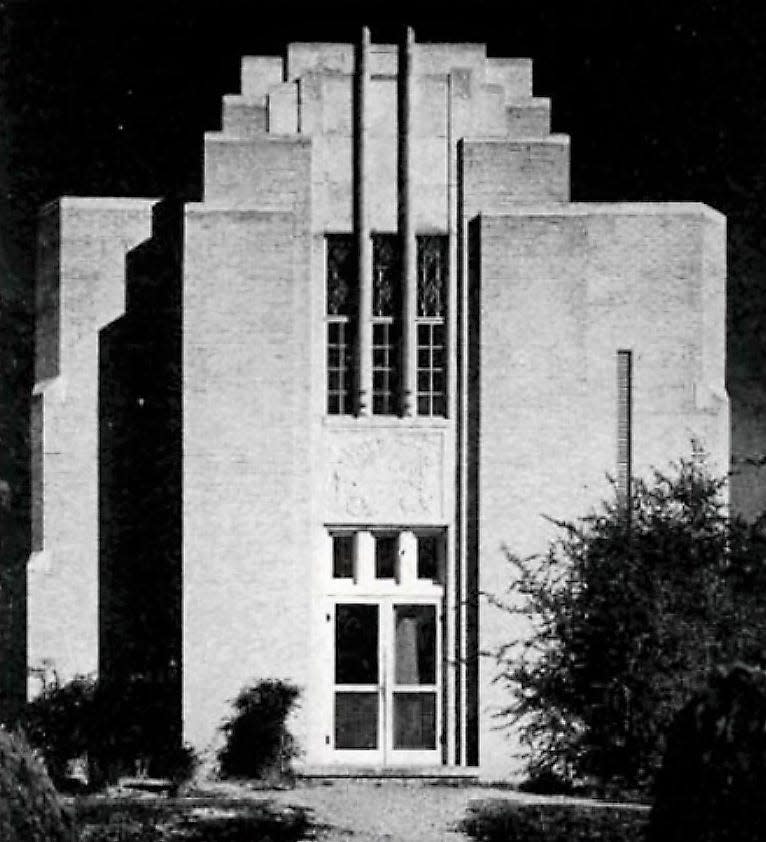
As for long-term plans, Allen said he remains open-minded but is inclined to transform the space into an artists’ studio.
“I am an artist myself, and I believe in doing what you know,” he said.
The more immediate goal is to have the building inspected by a structural engineer and meet with Barry White, director of the Historic Preservation Division of the Mississippi Department of Archives and History, to make sure future renovations meet state guidelines.
The building is listed on the Mississippi Register of Historic Places. Allen said he didn’t set out to save the transmitter building, but he and his wife, Allison, began looking for a new location for their growing sign business last year.
Building's former owner hoped to turn it into museum
The adjacent building at 5830 N. State St. turned out to be the perfect fit.
“We wanted to stay in Jackson, and this had just the right amount of office and workshop space,” he said.
And the fact that the transmitter was designed by Overstreet, who also designed the Allen’s home in Fondren, seemed like an interesting omen.
Previously the site had long been home to Sound and Communications Inc., an audio and video installation and engineering firm.
Algie Broome, who began with the company in 1957 and later became its president before retiring in 2016, said it was always his dream to see the transmitter building restored as a radio history museum.
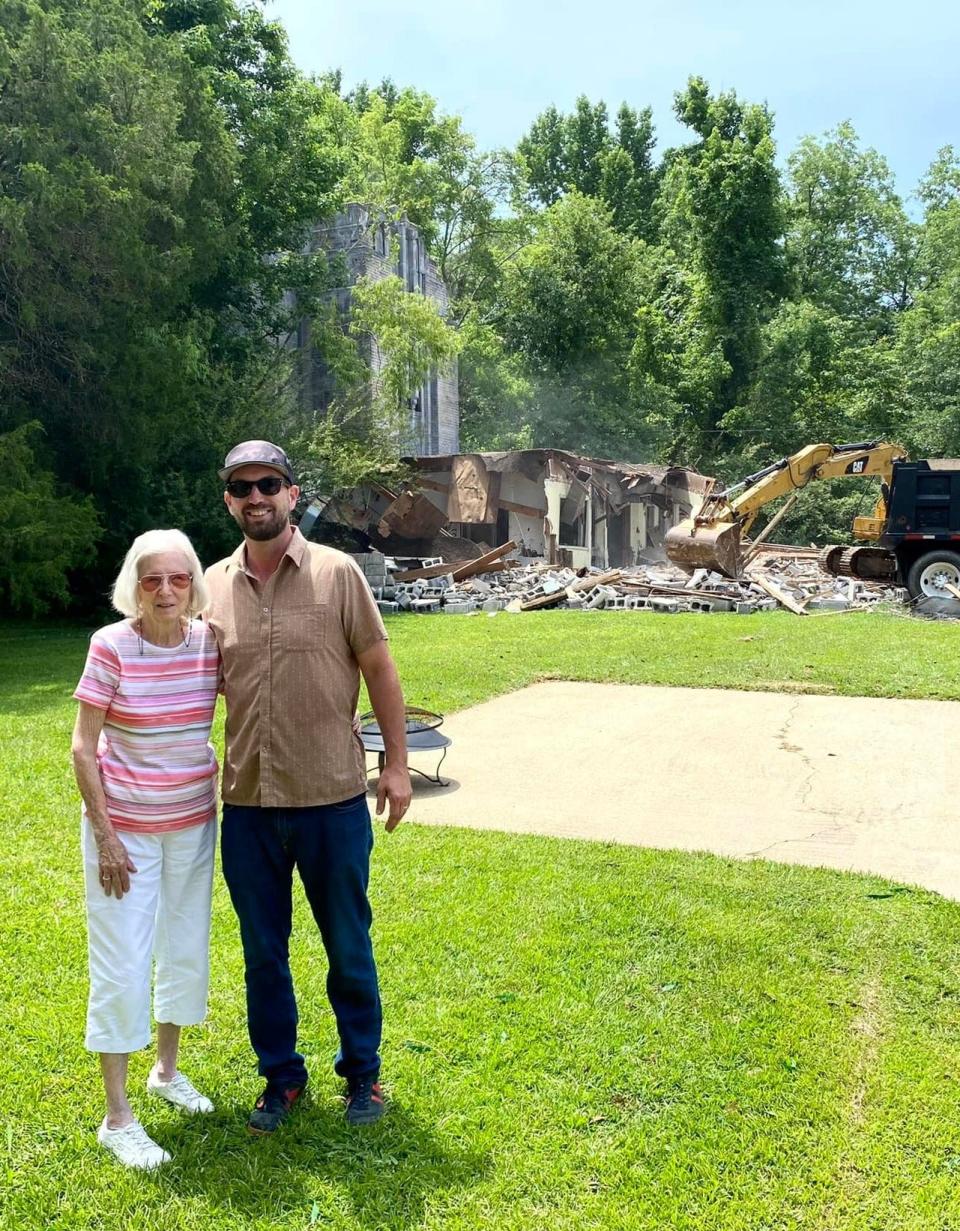
“Yes, I originated that idea when we bought the property in 1984,” Broome said. “I was always interested in radio, and many of the state’s broadcast stations were our customers.”
During his tenure as company president, one of Broome’s prized possessions was a vintage 1930s Philco radio in his office.
“It was about 3 feet tall and shaped like the transmitter building next door,” Broome said.
The potential museum generated some interest at the time, particularly among those in the broadcasting community.
But the estimated costs and daily demands of keeping his business operating caused Broome to sideline the idea.
“It was going to cost about $250,000 to get started, which is more change than I had to contribute at the time,” Broome said. “Meanwhile, I was responsible for about 20 families and keeping the corporation going — so I was very busy.”
A grand history
Though not Mississippi’s first broadcast station, WJDX became the first for Mississippi’s capital city and the first to be affiliated with a national network: NBC.
Owned by the Lamar Life Insurance Company, original construction applications were submitted by then-company vice-president C.W. Welty, father of celebrated Mississippi author Eudora Welty.
The lavish studios, located in the Lamar Life Building downtown (and connected to the transmitter site by telephone lines), included ivory ceilings, chandeliers, black velour drapes with gold fringe, and a Weber grand piano, according to published reports.
One of the first announcers was Armand Gilbert Coullet, a skilled violinist who also served as the station’s musical director.
To operate the transmitter site, Lamar hired engineer Percy Root of Memphis and arranged for his family to move into the two-bedroom apartment on the second floor above the equipment room.
One of Root’s 10 children, Ruth Root Benton, remembers the time well.
“Yes, I lived there until I was 16 years old,” Benton said.
To make room for the large family, her mom, Claire, found some Army cots stacked three high for all the children to sleep on.
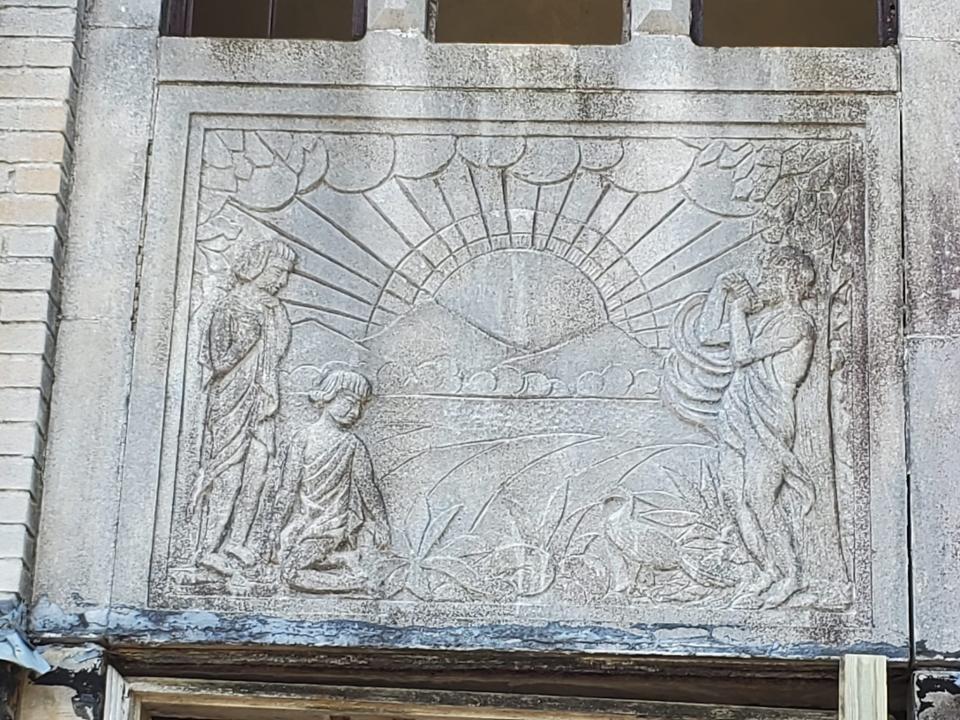
Asked whether she found the accommodations crowded, Benton said, “Not really. For the time, we had all the modern amenities — electricity, indoor plumbing and steam heat — and this was during a time when many of my friends still had outhouses and cooked on wood stoves.”
Of the Lamar Life Company, she said, “They always took good care of us — it wasn’t just run of the mill.”
The first broadcast was set for Saturday, Nov. 30, 1929, but technical difficulties ensued, delaying the debut for several days while further tests were performed.
Finally, on the evening of Dec. 8, 1929, WJDX was officially on the air. Initial programming included an invocation from Rev. Walter Capers of St. Andrews Episcopal Church, recaps from the day’s Georgia-Georgia Tech football game, and a local talent show called “Jitney Jungle Frolics.”
Clear as a bell
“Jacksonians are delighted over the fact that reception from WJDX is as clear as a bell, without the intermittent static that bugaboos programs from far away stations,” opined The Clarion-Ledger.
WJDX was initially assigned a frequency of 1270 kilocycles but switched to 1300 kc around 1940. It remained there until 1952, when the station arranged an unusual “frequency swap” with competing station WRBC.
Though details are murky, Lamar Life officials evidently felt WJDX needed to increase power and expand its reach if the station was to remain competitive in the increasingly crowded local radio landscape. Impressed with the new 5000-watt transmitter owned by WRBC (broadcasting on the clear channel of 620 kc), the company offered to buy it for $250,000 and, in turn, sell WRBC their old transmitter for $100,000.
The chance to profit $150,000 and still remain on the air was evidently a deal too good to pass up by the fledgling WRBC (which had signed on just five years earlier in 1947). Federal approval of the transaction came late in the year, and the two stations flipped frequencies on Dec. 22, 1952. By January, Lamar Life was purchasing large advertisements to tout their new frequency and improved coverage.
It also meant that the Root family would themselves be uprooted and moved to the new transmitter site in Rankin County. Their new house near where Jackson’s airport now stands was more spacious than the upstairs apartment, Benton remembers. But after living there only a few years, a tornado struck and completely destroyed it. After that, the company provided them with a different house in Brandon.
Unwelcome addition
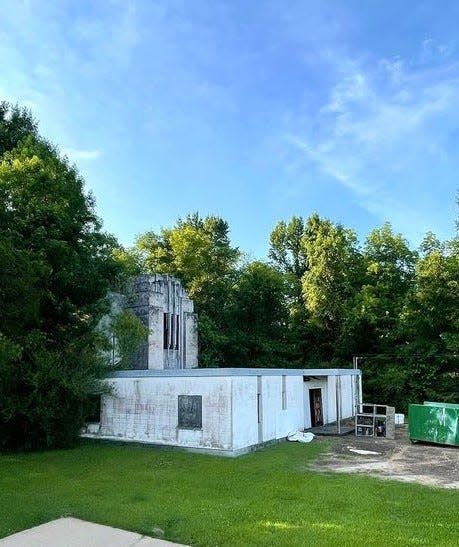
Back at the original transmitter site, the long-reviled cinder-block addition popped up around 1967, according to best estimates. That’s the year WRBC was granted a license to start sister FM station, WJMI, to broadcast at 99.7 MHz. For the next several years, WRBC and WJMI shared studio space in the new addition, one on the north side and the other on the south.
But WRBC’s foray into FM broadcasting was short-lived. The company sold WJMI to the owners of radio station WOKJ in April 1973, and WJMI switched from easy listening to an urban contemporary format. The station remains on the air today, popularly known as “99 Jams.”
Then in 1978, finding its longtime top 40 rock format losing ground to emerging FM album rock among young listeners, WRBC delivered its final swan song. The frequency was sold and became the new home of urban-formatted WKXI. The 1300 frequency is today occupied by gospel station WOAD,
In the meantime, WJDX (known as WJDS during part of the 1990s) continues today on its longtime frequency of 620 — almost a century after its founding —with a mix of talk and sports programming.
And the site of its original transmitter, after being mostly abandoned for over 40 years, appears closer than ever to a grand rebirth. “Scott (Allen) is really doing a great job!” Benton said.
This article originally appeared on Mississippi Clarion Ledger: WJDX building, radio station, is being restored: Jackson, Mississippi

